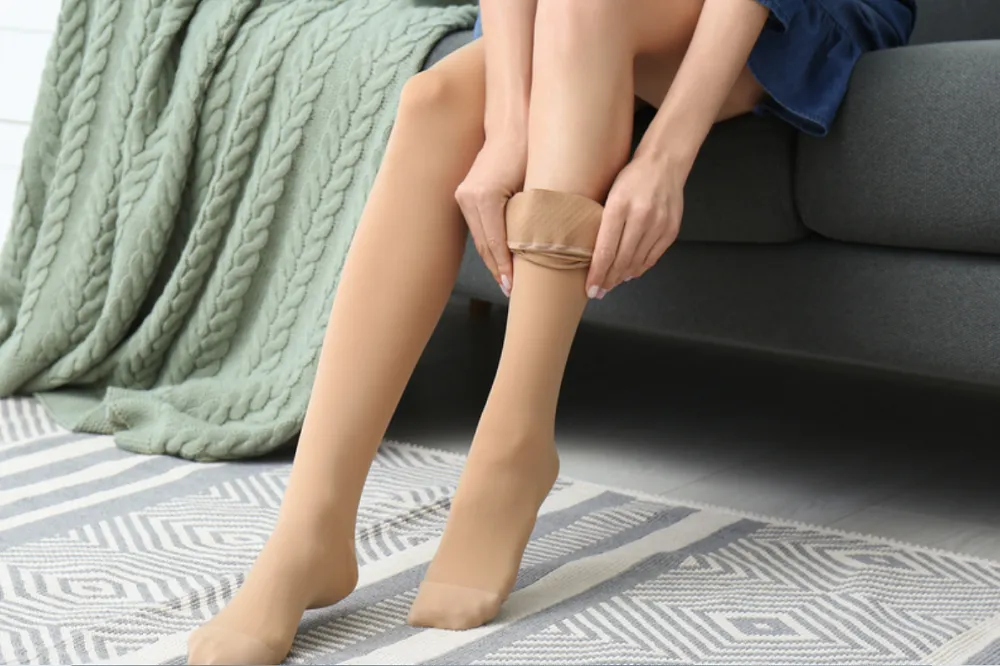Chronic Venous Insufficiency (CVI) is a common medical condition that occurs when the valves in the veins of the legs fail to function correctly.
Chronic Venous Insufficiency (CVI) is a common medical condition that occurs when the valves in the veins of the legs fail to function correctly. It results in blood flowing backwards and pooling in the legs which leads to swelling, pain, and skin changes.[1]
While the condition is common, there are various reasons as to why one can contract CVI. We’re going to be looking at some of these causes below:
- Aging [2]
The most common cause of CVI is the wear and tear of the body due to aging. As we age, the veins become less elastic and lose their ability to contract. This often leads to valves in the veins becoming weak and not being entirely able to prevent blood from flowing back into the legs. As a result, the blood pools in the legs leading to swelling and discomfort. - Sedentary Lifestyle [3]
The importance of exercise for a healthy body cannot be emphasized enough. People who sit or stand for long periods of time without moving, and those who do not have an active lifestyle, can develop CVI. The lack of movement leads to poor circulation which can cause the blood to pool in the legs. Regular movement or exercise helps the muscles in the legs to pump blood back up to the heart. - Obesity [4]
Another major contributor to CVI, obesity, leads to added pressure on the veins. This pressure can cause the valves in the veins to not function properly, leading to blood pooling in the veins. - Pregnancy [5]
During pregnancy, the body starts to produce more blood to support the growing fetus. The increase in blood volume can put added pressure on the veins in the legs, leading to CVI. In addition, the hormones produced during pregnancy can cause the veins to become more elastic which in turn makes it harder to pump blood back to the heart. - Injuries & Blood Clots [6]
Injuries to the legs or blood clots can also cause CVI. When the veins are damaged, blood can pool in the affected areas, leading to swelling and discomfort. Blood clots can also obstruct the flow of blood through the veins, leading to CVI.
Understanding the causes for CVI can help you lead a more comfortable life and learn how to manage the condition. Maintaining a healthy lifestyle, exercising regularly, and seeking medical attention for injuries or blood clots can all help prevent or manage CVI.
For those who are suffering from CVI, Esenvia® is an OTC product that provides relief from the signs and symptoms of CVI like varicose veins, pain, swelling, burning sensation, heaviness of legs, and spider veins. [7]
This product may not be right for you. Please read and follow the label before use.
Esenvia® is a registered trademark owned by Norwell Consumer Healthcare Inc.
REFERENCES
[1] Chronic Venous Insufficiency (CVI)
Cleveland Clinic,
https://my.clevelandclinic.org/health/diseases/16872-chronic-venous-insufficiency-cvi
[2] Sequelae of Untreated Venous Insufficiency
NIH
https://www.ncbi.nlm.nih.gov/pmc/articles/PMC3036289/
[3] oyner, M. J., & Casey, D. P. (2015). Regulation of Increased Blood Flow (Hyperemia) to Muscles During Exercise: A Hierarchy of Competing Physiological Needs. Physiological Reviews, 95(2), 549-601.
https://www.ncbi.nlm.nih.gov/pmc/articles/PMC4551211/
[4] Chronic Venous Insufficiency (CVI)
Cleveland Clinic
https://my.clevelandclinic.org/health/diseases/16872-chronic-venous-insufficiency-cvi#:~:text=What%20is%20the%20most%20common,higher%20risk%20of%20developing%20CVI
[5] Varicose Veins During Pregnancy
Penn Medicine
https://www.pennmedicine.org/updates/blogs/heart-and-vascular-blog/2018/june/varicose-veins-during-pregnancy
[6] Chronic venous insufficiency
UC Davis Health
https://health.ucdavis.edu/vascular/diseases/cvi.html#:~:text=Over% 20time%2C%20the%20veins%20weaken,the%20valves%20in%20the%20veins
[7] Our Website
https://www.esenvia.com/





